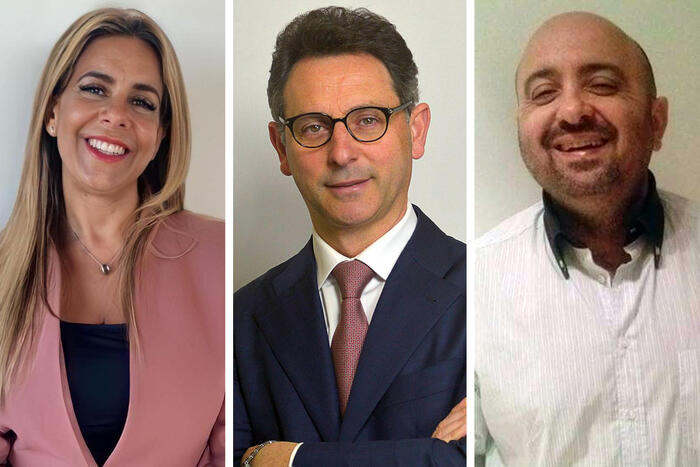First Italian elections of the post-Covid era. On 20 and 21 September, Italians are called to vote to renew the leadership of 7 Regions and almost a thousand Municipalities, for the referendum to confirm the reform on the cut in the number of parliamentarians and for the supplementary work of two single-member constituencies in Sardinia and Veneto.
Here's everything you need to know about election day.
WHEN TO VOTE - To ensure social distancing, voting operations will take place over two days: Sunday from 7 to 23 and Monday from 7 to 15.
WHO IS CALLED TO VOTE - There are 51,559,898 voters called to express themselves for the constitutional referendum and 18,590,081 for the regional elections, involving 6 regions with ordinary statute (Campania, Liguria, Marche, Puglia, Tuscany and Veneto) and 1 with special statute (Valle d'Aosta). For the supplementary elections of the Senate, those entitled to vote are 467,122 for Sardinia (plurinominal college 01 - uninominal college 03 Sassari) and 352,696 for Veneto (plurinominal college 02 - uninominal college 09 Villafranca di Verona). The local elections also affect 962 municipalities and involve 5,725,734 voters.
THE REFERENDARY QUESTION, THERE IS NO QUORUM - The question printed on the form is: "Approve the text of the constitutional law concerning" Amendments to articles 56, 57 and 59 of the Constitution regarding the reduction of the number of parliamentarians ", approved by Parliament and published in the Official Gazette of the Italian Republic n.240 of 12 October 2019? ". For the validity of the constitutional confirmatory referendum, unlike for the abrogative referendum, a quorum of validity is not provided for by law; that is, it is not required that the majority of those entitled to vote take part in the vote and the referendum outcome is in any case valid regardless of the percentage of voters' participation.
THE CHALLENGES IN THE REGIONS - Overall there are 35 aspiring governors for 6 Regions (in Valle d'Aosta the election of the president is indirect). In Liguria the outgoing Giovanni Toti is threatened by Ferruccio Sansa, the result of the Pd-M5S agreement. In Veneto to challenge Luca Zaia are Arturo Lorenzoni (supported by a center-left coalition) and Enrico Cappelletti (M5S). In Tuscany Eugenio Giani (supported by Pd, Iv and La Sinistra) challenges the Northern League supporter Susanna Ceccardi while the Movement lines up Ivana Galletti. In the Marches the dispute is between Maurizio Mangialardi (supported by Pd and Iv and former CinqueStelle) and the Melonian Francesco Acquaroli with the pentastellato Gianluca Mercorelli as an outsider. In Puglia, the outgoing Michele Emiliano will face Raffaele Fitto with the variables Antonella Laricchia (M5S) and Ivan Scalfarotto (Iv) who, for the former prosecutor, risk being decisive. In Campania to challenge De Luca are the blue Stefano Caldoro and the dimaiana Valeria Ciarambino.
THE STAKE - The united center-right, the parties that make up the majority no. A fact that photographs what, for the majority, is an uphill game. Pd, M5S and Iv do not run together in any Region. Where, as in Liguria, the Dem and the Movement managed to find an agreement, the Renzians paraded, testifying to the fact that the "three-legged" center-left is little more than a utopia. And Nicola Zingaretti, aware of the stakes, underlines a single fact: "the Democratic Party is the real alternative to the right". The vote is however bound to have national repercussions. To risk, perhaps, is not so much the government but the stability of the majority and that within the parties. The Democratic Party is called to three crucial challenges: in Tuscany, Marche and Puglia. In all three regions the polls, at the moment, are not reassuring and for the Dems it is essential to win at least two out of three. And Matteo Salvini has been in the electoral campaign for days. "Pd, M5S and Renzi argue over everything, from 22 September something will change in Rome too", warns the Northern League leader. "The vote will also be a judgment on Conte and the majority", echoes Maria Stella Gelmini.
COVID RULES - The decree calling for the vote underlined the need to guarantee the right to vote even for those who are subjected to anti-Covid therapy or in quarantine. Hence, hospital electoral sections will be set up in health facilities with at least 100 and up to 199 beds, which host Covid departments. They will be enabled to collect the home vote of voters undergoing home treatment or in conditions of quarantine or fiduciary isolation for Coronavirus. These people must send - between the tenth and the fifth day before the consultation - to the mayor of the municipality of residence a declaration certifying their willingness to vote at their home and a certificate indicating the condition of being infected. The vote will be collected "during the hours in which the voting is open. The freedom and secrecy of the vote is ensured, by all suitable means, in compliance with the needs connected with the health conditions of the voter".




/cloudfront-eu-central-1.images.arcpublishing.com/prisa/TP3BD7YNYFDP3JYTJUSHNEPYHQ.jpg)


